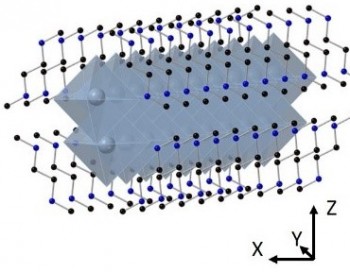News
Renewal of Royal Society University Research Fellowship for Dr Fenwick to study low dimensional energy materials
15 May 2020

Crystal structure of a 1-dimensional organometal halide semiconductor
Nanomaterials have dimensions less than 100 billionths of a metre, and on these length scales they can acquire completely new properties. Examples include metal quantum dots less than 10 nanometres in diameter which emit light, or graphene which, being a single layer of carbon atoms, is nano-sized in one dimension and exhibits extraordinary electronic and thermal properties. This is a huge family of materials with a diverse range of properties, many of which cannot be achieved with conventional materials. However, the small size of nano-objects can make them difficult to manipulate, hard to integrate in devices or even toxic. It would be highly desirable to achieve some of the benefits of nanomaterials in bulk materials which are easier to process into practical devices.
In this project Dr Fenwick will develop materials which are crystals comprising well-defined nano-objects arranged on a regular lattice. These nano-objects will be either two-dimensional (ultrathin layers within the material), one-dimensional (linear structures within the material), or zero-dimensional (quantum dots within the material), with unusual electronic properties in all cases.
The bulk materials, which are straightforward to process, will retain low-dimensional characteristics. These unusual characteristics will be used to boost the efficiency of energy devices. In particular, this project will investigate their use for thermoelectrics (conversion of waste heat into electricity), and photovoltaics, delivering in both cases new materials for improved energy devices.
In this project Dr Fenwick will develop materials which are crystals comprising well-defined nano-objects arranged on a regular lattice. These nano-objects will be either two-dimensional (ultrathin layers within the material), one-dimensional (linear structures within the material), or zero-dimensional (quantum dots within the material), with unusual electronic properties in all cases.
The bulk materials, which are straightforward to process, will retain low-dimensional characteristics. These unusual characteristics will be used to boost the efficiency of energy devices. In particular, this project will investigate their use for thermoelectrics (conversion of waste heat into electricity), and photovoltaics, delivering in both cases new materials for improved energy devices.
| Website: | |
| People: | Oliver FENWICK |
Updated by: Oliver Fenwick




